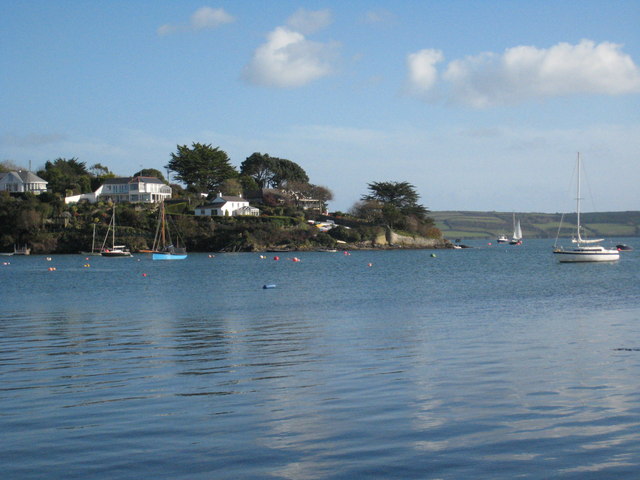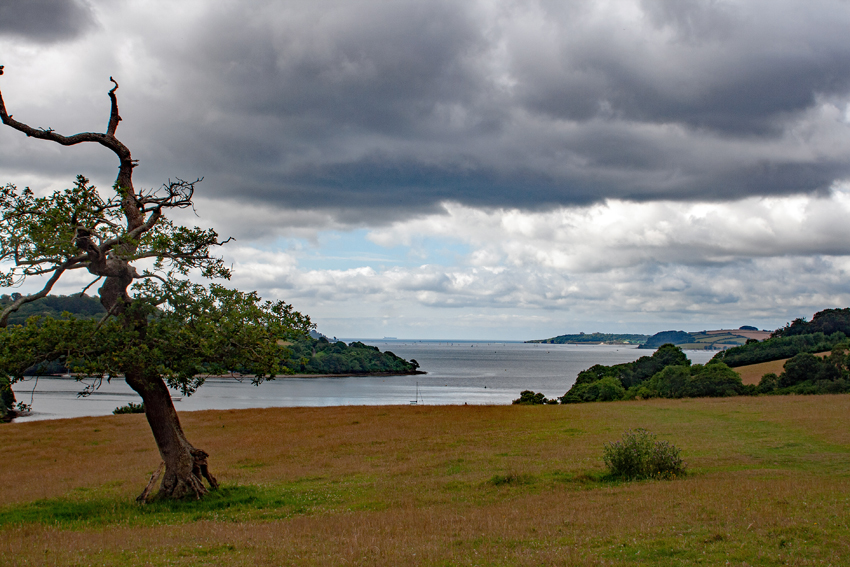|
Restronguet Point
Restronguet Point ( kw, Ros Trongoos, meaning ''promontory of a wooded point'') is a small narrow promontory in the civil parish of Feock in south Cornwall, England, United Kingdom. It is situated approximately three-quarters of a mile (1 km) south of Feock village.Ordnance Survey: Landranger map sheet 204 ''Truro & Falmouth'' Together with Harcourt ( kw, Ar Carrek, meaning ''facing a rock'') and Porthgwidden (neighbouring settlements immediately north of the promontory), Restronguet Point forms a distinct community recognised by Feock Parish Council and supported by its own community group, 'Friends of Restronguet Point'. The group has an input into local planning decisions. Friends Of Restronguet Point website. Retrieved May 2010 Restronguet Point is a residential area with housing (mostly large detached properties) on both sides of the lane from Feock. [...More Info...] [...Related Items...] OR: [Wikipedia] [Google] [Baidu] |
Point, Cornwall
Chycoose ( kw, Chy'n Coos, meaning ''house of the wood''), Point and Penpol ( kw, Pen Pol, meaning ''head of a creek'') form a coastal settlement around Penpol Creek in Cornwall, England, United Kingdom. The creek is a ria, a tidal inlet on the north side of Restronguet Creek. It is situated approximately three-quarters of a mile (1 km) west of Feock village which is four miles (6.5 km) south of Truro. Chycoose is on the west bank of Penpol Creek and Penpol hamlet is at the north end of the creek. Point is on a small promontory where Penpol Creek joins Restronguet Creek. Trolver, a small coastal settlement, extends along the east side of the Penpol Creek south from Penpol. Today, all four settlements are residential in character with many of the houses having river frontages and all four are in the civil parish of Feock. Cornwall Council online mapping. Retrieved May 2010 However, until the beginning of the 20th century, Restronguet Creek was a busy commercial wa ... [...More Info...] [...Related Items...] OR: [Wikipedia] [Google] [Baidu] |
Promontory
A promontory is a raised mass of land that projects into a lowland or a body of water (in which case it is a peninsula). Most promontories either are formed from a hard ridge of rock that has resisted the erosive forces that have removed the softer rock to the sides of it, or are the high ground that remains between two river valleys where they form a confluence. A headland, or head, is a type of promontory. Promontories in history Located at the edge of a landmass, promontories offer a natural defense against enemies, as they are often surrounded by water and difficult to access. Many ancient and modern forts and castles have been built on promontories for this reason. One of the most famous examples of promontory forts is the Citadel of Namur in Belgium. Located at the confluence of the Meuse and Sambre rivers, the citadel has been a prime fortified location since the 10th century. The surrounding rivers act as a natural moat, making it difficult for enemies to access the fo ... [...More Info...] [...Related Items...] OR: [Wikipedia] [Google] [Baidu] |
Civil Parish
In England, a civil parish is a type of Parish (administrative division), administrative parish used for Local government in England, local government. It is a territorial designation which is the lowest tier of local government below districts of England, districts and metropolitan and non-metropolitan counties of England, counties, or their combined form, the Unitary authorities of England, unitary authority. Civil parishes can trace their origin to the ancient system of Parish (Church of England), ecclesiastical parishes, which historically played a role in both secular and religious administration. Civil and religious parishes were formally differentiated in the 19th century and are now entirely separate. Civil parishes in their modern form came into being through the Local Government Act 1894, which established elected Parish councils in England, parish councils to take on the secular functions of the vestry, parish vestry. A civil parish can range in size from a sparsely ... [...More Info...] [...Related Items...] OR: [Wikipedia] [Google] [Baidu] |
Feock, Cornwall
Feock ( ; kw, Lannfyek) is a coastal civil parish and village in Cornwall, England, United Kingdom. It is about south of Truro at the head of Carrick Roads on the River Fal. To the south, the parish is bordered by Restronguet Creek and to the east by Carrick Roads and the River Fal. To the north it is bordered by Kea parish and to the west by Perranarworthal parish. Feock parish includes the villages of Carnon Downs, Chycoose, Devoran, Goon Piper, Harcourt, Killiganoon, Penelewey, Penpol, Porthgwidden, Restronguet Point, Trevilla, and Trelissick. The electoral ward is called Feock and Kea. At the 2011 census it had a population of 4,511 whereas the civil parish including Bissom has a population of 3,708 only. The garden of the Trelissick Estate is a National Trust property. The King Harry Ferry takes cars across the Fal to Philleigh and the Roseland Peninsula. Feock lies within the Cornwall Area of Outstanding Natural Beauty (AONB). Almost a third of Cornwall has AONB ... [...More Info...] [...Related Items...] OR: [Wikipedia] [Google] [Baidu] |
Cornwall
Cornwall (; kw, Kernow ) is a historic county and ceremonial county in South West England. It is recognised as one of the Celtic nations, and is the homeland of the Cornish people. Cornwall is bordered to the north and west by the Atlantic Ocean, to the south by the English Channel, and to the east by the county of Devon, with the River Tamar forming the border between them. Cornwall forms the westernmost part of the South West Peninsula of the island of Great Britain. The southwesternmost point is Land's End and the southernmost Lizard Point. Cornwall has a population of and an area of . The county has been administered since 2009 by the unitary authority, Cornwall Council. The ceremonial county of Cornwall also includes the Isles of Scilly, which are administered separately. The administrative centre of Cornwall is Truro, its only city. Cornwall was formerly a Brythonic kingdom and subsequently a royal duchy. It is the cultural and ethnic origin of the Cor ... [...More Info...] [...Related Items...] OR: [Wikipedia] [Google] [Baidu] |
Porthgwidden
Porthgwidden ( kw, Porth Gwydn, meaning ''white cove'') is a small hamlet in Cornwall, England, United Kingdom. It is located in the civil parish of Feock on the shore of the Carrick Roads Carrick Roads ( kw, Dowr Carrek, meaning "rock anchorage") is the estuary of the River Fal on the south coast of Cornwall in England. It joins the English Channel at its southern end near Falmouth. Geography It is a large flooded valley, or ....Ordnance Survey: Landranger map sheet 204 ''Truro & Falmouth'' References Hamlets in Cornwall Populated coastal places in Cornwall {{Cornwall-geo-stub ... [...More Info...] [...Related Items...] OR: [Wikipedia] [Google] [Baidu] |
Restronguet Creek
Restronguet Creek is a tidal ria in south Cornwall, United Kingdom. It is a tributary of Carrick Roads, the estuary of the River Fal, and is situated approximately four miles (6.5 km) south of Truro and three miles (5 km) north of Falmouth. Ordnance Survey: Landranger map sheet 204 ''Truro & Falmouth'' The creek is approximately two miles (3 km) long from its Normal Tidal Limit (NTL) to its mouth and half-a-mile (800 metres) across at its widest point. It discharges into Carrick Roads at Restronguet Point through a narrow channel known locally as 'the gut'. Restronguet Creek Society website. Retrieved May 2010 Restronguet Creek forms the boundary between the es of [...More Info...] [...Related Items...] OR: [Wikipedia] [Google] [Baidu] |
Carrick Roads
Carrick Roads ( kw, Dowr Carrek, meaning "rock anchorage") is the estuary of the River Fal on the south coast of Cornwall in England. It joins the English Channel at its southern end near Falmouth. Geography It is a large flooded valley, or ria, created after the ice age by the melt waters that caused a dramatic rise in sea level, resulting in a large natural harbour which is navigable from Falmouth to Truro. The Carrick Roads have large tidal flows; the water starts to recede six hours and five minutes before high water at Dover. Tidal speeds can reach three knots in the upper parts of the basin and one and a half to two in the lower stretches. The journey from Truro to Falmouth is a Grade A route for kayakers. The Carrick Roads can be seen well from the Trelissick Peninsula. From this viewpoint the waters stretch away towards Falmouth. On the left is Camerance Point, a tree-clad promontory. The Feock Peninsula is on the right and beyond that is the creek leading to Mylor vi ... [...More Info...] [...Related Items...] OR: [Wikipedia] [Google] [Baidu] |
Cornwall Area Of Outstanding Natural Beauty
The Cornwall Area of Outstanding Natural Beauty covers in Cornwall, England, UK; that is, about 27% of the total area of the county. It comprises 12 separate areas, designated under the National Parks and Access to the Countryside Act 1949 for special landscape protection. Of the areas, eleven cover stretches of coastline; the twelfth is Bodmin Moor. The areas are together treated as a single Area of Outstanding Natural Beauty (AONB). Section 85 of the Countryside and Rights of Way Act 2000 places a duty on all relevant authorities when discharging any function affecting land within an AONB to have regard to the purpose of conserving and enhancing natural beauty. Section 89 places a statutory duty on Local Planning Authorities with an AONB within their administrative area to produce a 5-year management plan. Designation The areas were designated in 1959, except for the Camel estuary which was added in 1981. [...More Info...] [...Related Items...] OR: [Wikipedia] [Google] [Baidu] |
Villages In Cornwall
A village is a clustered human settlement or community, larger than a hamlet but smaller than a town (although the word is often used to describe both hamlets and smaller towns), with a population typically ranging from a few hundred to a few thousand. Though villages are often located in rural areas, the term urban village is also applied to certain urban neighborhoods. Villages are normally permanent, with fixed dwellings; however, transient villages can occur. Further, the dwellings of a village are fairly close to one another, not scattered broadly over the landscape, as a dispersed settlement. In the past, villages were a usual form of community for societies that practice subsistence agriculture, and also for some non-agricultural societies. In Great Britain, a hamlet earned the right to be called a village when it built a church. [...More Info...] [...Related Items...] OR: [Wikipedia] [Google] [Baidu] |






